As always, Chris presents excellent training in such a sensible manner. There are many great but simple ideas on how to monitor books, relate them to the intention and what steps to take going forward. I particularly love the simple but effective method of writing sentences three times with because, so and but to demonstrate good knowledge of a topic.
Overview:
This course offers an exhaustive examination of the three critical aspects of the curriculum:
- the Intended Curriculum,
- the Enacted Curriculum, and
- the Learnt Curriculum.
By attending, you will gain a thorough understanding of these aspects and learn how to align them effectively for improved teaching and learning outcomes.
Session 1: Specifying the Intended Curriculum
This session provides a detailed roadmap for defining the intended curriculum, moving from general objectives to specific, actionable goals. Dive into carefully curated examples drawn from the English National Curriculum to illuminate the disciplinary and substantive knowledge your students need to master. Unlock insights into the mechanics of learning and grasp the profound implications for your progression model. This isn't just a preliminary step; it's the cornerstone of effective curriculum design. The more precise you are in delineating what students should learn and the pathways they should follow, the easier it becomes to identify whether your educational goals are indeed being met.
Key areas covered include:
- Identification of general objectives and their refinement into specific learning goals.
- How to create a qualitative progression model that portrays progress.
- Discussion of case studies from the English National Curriculum that highlight best practices in curriculum design.
- Explanation of how learning occurs and the factors that influence student progression.
By the session's end, participants will be equipped to set clear learning objectives and pathways for students, facilitating easier evaluation of whether these objectives are being met in the classroom.
Session 2: Optimising the Enacted Curriculum
This session aims to bridge the gap between the intended and the enacted curriculum, focusing on the practicalities of classroom implementation. Participants will learn how to align the general aims and specific knowledge objectives from their intended curriculum with actual teaching practices. The session will incorporate Lee Shulman's framework for understanding content knowledge, pedagogical knowledge, and pedagogical content knowledge to ensure a comprehensive approach to the subject matter.
Key components include:
- A review of evidence-informed teaching methods with a focus on Rosenshine's Principles.
- Guidelines on implementing these principles in the classroom.
- Exploration of how learning takes place, using current educational research.
- Practical steps for conducting lesson observations to evaluate the alignment and effectiveness of the curriculum.
By the end of this session, attendees will have insight into how well their curriculum objectives are translated into actionable classroom strategies.
Session 3: Analysing the Learnt Curriculum
The concluding session aims to provide you with a comprehensive toolkit for assessing the effectiveness of your curriculum, anchored in robust, research-based methodologies. It will not only focus on workbook scrutiny but also introduce various evaluation techniques to give you a multifaceted view of curriculum impact.
Key aspects covered are:
- A step-by-step guide on how to conduct workbook scrutiny, with a focus on examining prior learning, assessing the breadth and depth of subject coverage, and evaluating student progress.
- Introduction to a model for facilitating learning talks with students, rooted in curriculum expectations. This model aims to provide a structured platform for understanding student engagement and learning efficacy.
- An overview of additional evaluation techniques that complement workbook scrutiny, such as student surveys, teacher interviews, and classroom observation.
By the end of this session, participants will be proficient in applying a range of evaluation tools to critically evaluate the effectiveness, breadth and depth of their curriculum.
Key Benefits
-
Comprehensive Curriculum Understanding: Gain an exhaustive understanding of the three critical dimensions of curriculum—Intended, Enacted, and Learnt—and learn how to align them for improved educational outcomes seamlessly.
-
Detailed Roadmaps: Each session provides a step-by-step guide, moving from general objectives to specific, actionable strategies. From setting clear learning goals to implementing them in the classroom and finally evaluating their effectiveness, you'll have a complete blueprint for curriculum design and evaluation.
-
Evidence-Based Methods: Review your use of evidence-informed teaching methods and evaluation techniques rooted in robust educational research, including Rosenshine's Principles and Lee Shulman's framework for content, pedagogical, and pedagogical content knowledge.
-
English National Curriculum Focus: Benefit from case studies and examples explicitly drawn from the English National Curriculum, making the insights immediately relevant and applicable.
-
Practical Tools for Evaluation: Acquire a diverse set of tools for evaluating the effectiveness of your curriculum. This includes workbook scrutiny, learning talks with students, and other evaluation techniques such as student surveys and teacher interviews.
-
Actionable Strategies: Leave the webinar with concrete plans and methods for optimising your curriculum, whether refining learning objectives, adjusting teaching practices, or implementing new evaluation methods.
-
Enhanced Student Progression: Unlock valuable insights into the mechanics of learning and student progression, equipping you with the knowledge to create a more effective and adaptive learning environment.
By attending this webinar, you'll not only gain in-depth knowledge but also practical skills and tools to advance your curriculum planning, execution, and evaluation.
Individual & Group Access
The prices above are the total amount you will pay for your group plus VAT.
Just select Pay by Invoice and enter the required information.
You have 30 days to pay your invoice.
If your selected date to access the course is prior to 30 days we will still grant you access to the course and your invoice is payable in line with our Terms and Conditions.
If you have selected 1-5 delegates, for example, but you only enter the details of 2 of the delegates now, you will have the option to add additional delegates via your CQE account up until 48 hours prior to your requested course start date.
Pay by InvoiceThe training was very useful. Lots to think about and help with monitoring impact. Thank you!
Thank you! This training has been extremely useful.
Lots to think about to refine our curriculum. Thank you!
Thanks Chris! Really useful day and lots of things to think about.

.png)




